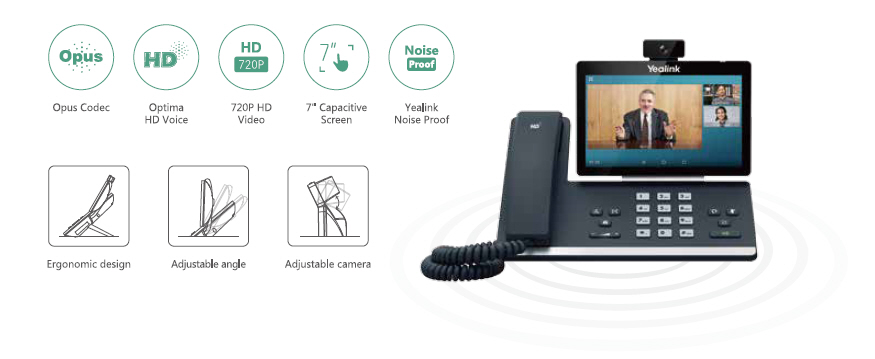Introduction
VoIP, or Voice over Internet Protocol, has transformed the way we communicate. Gone are the days when people relied solely on traditional landlines for their calling needs. With the rise of internet-based communication, VoIP phone service has emerged as a prominent player in both personal and business settings. In this comprehensive article, we'll dive deep into The Evolution of VoIP: How We Got Here and Where We're Going, exploring its origins, technological advancements, and future possibilities.
The Evolution of VoIP: How We Got Here and Where We're Going
What is VoIP? An Overview
Voice over Internet Protocol (VoIP) refers to a technology that allows users to make voice calls using the internet instead of traditional telephone lines. This technology converts analog audio signals into digital data packets, transmitting them over the internet.
A Brief History of Communication Technology
To understand VoIP's evolution, it's essential to examine the history of communication technologies that led us here.
Early Communication Methods
- Telegraphy: The first significant leap in communication came with Samuel Morse’s telegraph in the 1830s. Telephone: Alexander Graham Bell invented the telephone in 1876, revolutionizing voice communication.
The Rise of Digital Communication
https://soundcurve.com/voip-phone-service-encino-ca/ https://soundcurve.com/about-us/ https://soundcurve.com/contact-us/ VoIP Phone System Los Angeles- The late 20th century saw the emergence of digital technologies that laid the groundwork for VoIP. The transition from analog to digital signals allowed for more efficient data transmission.
The Birth of VoIP Technology
VoIP technology began to take shape in the early 1990s when researchers started experimenting with digitizing voice signals.
Key Developments
H.323 Protocol (1996): This set of protocols provided standards for multimedia communication over IP networks. SIP (Session Initiation Protocol): Introduced later, SIP became a cornerstone for modern VoIP communications.The Role of Broadband Internet in VoIP Adoption
Broadband internet access became widely available in the late 1990s and early 2000s, providing an essential infrastructure for VoIP services to flourish.
Advantages of Broadband for VoIP Users
- Increased bandwidth allowed for clearer audio quality. Reduced latency improved call reliability and performance.
How Do VoIP Phone Services Work? A Deep Dive
VoIP phone services convert voice signals into digital packets that travel over IP networks. Let’s break down how this process works:
Signal Conversion: The analog signal is converted into a digital format. Packetization: The digital signal gets broken down into smaller packets. Transmission: These packets are sent over the internet through various routers and switches. Reassembly: Upon reaching their destination, packets are reassembled back into voice form.VoIP vs Traditional Phone Services: A Comparison
| Feature | VoIP Phone Service | Traditional Phone Service | |-----------------------|----------------------------|--------------------------------| | Cost | Generally cheaper | Higher monthly fees | | Call Quality | Depends on internet speed | Generally consistent | | Features | Advanced features available | Basic features | | Mobility | Can be used anywhere | Limited to physical location |

The Impact of Mobile Technology on VoIP Usage
With smartphones becoming ubiquitous, mobile applications have drastically changed how we use VoIP services today.
Popular Mobile VoIP Applications
- Skype WhatsApp Zoom
These apps allow users to make calls over Wi-Fi or mobile data plans without incurring traditional phone charges.

Security Concerns Surrounding VoIP Technology
While convenient, VoIP technology raises security concerns that users should be aware of:
Eavesdropping: Hackers can intercept calls if proper encryption isn’t used. Denial-of-Service Attacks: These can disrupt service by overwhelming servers with traffic. Phishing Scams: Users can fall victim to scams disguised as legitimate services.FAQs About VoIP
FAQ 1: What are the benefits of using a VoIP phone service?
VoIP phone services offer numerous advantages including lower costs, advanced features like call forwarding and voicemail-to-email, mobility options allowing you to use your service anywhere with internet access, and scalability for businesses as they grow.
FAQ 2: Is my internet connection good enough for VoIP?
Generally speaking, a stable broadband connection with at least 1 Mbps upload/download speed is sufficient for one user making calls via a VoIP phone service. However, larger households or offices may require higher speeds depending on usage levels.
FAQ 3: Can I keep my existing phone number with a new VoIP service?
Yes! Many VoIP providers offer number porting services that allow customers to keep their existing numbers when switching from traditional phone lines to a new provider.
FAQ 4: Are international calls cheaper with VoIP?
Absolutely! One major advantage is that international calling rates are significantly lower compared to conventional landline services thanks to reduced infrastructure costs associated with internet-based communications.
FAQ 5: What equipment do I need for a home-based VoIP setup?
Typically you'll need an internet connection (broadband), a compatible device (like an IP phone or computer), and possibly an adapter if you're connecting standard phones directly.
FAQ 6: Is it possible to use my smartphone as a VoIP device?
Certainly! Many apps enable smartphones to function as fully-fledged phones via Wi-Fi or mobile networks using your current plan or dedicated data allowances specifically designed for calling purposes without incurring extra charges!
The Future Landscape of Voice Communication
As we venture forward, what does the future hold for Voice over Internet Protocol?
Emerging Trends in Communication Technology
AI Integration:- Artificial Intelligence will enhance customer interactions through predictive analytics and personalized responses.
- With faster speeds and reduced latency, we can expect even clearer calls and more reliable connections.
- Expect further integration between voice calling platforms and other modes like video conferencing or instant messaging within single interfaces for streamlined communication experiences across devices!
Conclusion
In summary, we've witnessed remarkable growth in communication technology through innovations like Voice over Internet Protocol (VoIP). As we've explored its evolution—how we got here—it’s clear that several factors such as broadband adoption shaped its widespread acceptance among consumers today while also paving paths toward exciting potential developments on this horizon ahead! As businesses continue leveraging these tools effectively alongside emerging technologies—there's no telling just how far we'll go next!
With this deep dive into The Evolution of VoIP: How We Got Here and Where We're Going*, we hope you've gained insights about its journey thus far while getting curious about what's next on this fascinating road ahead!
